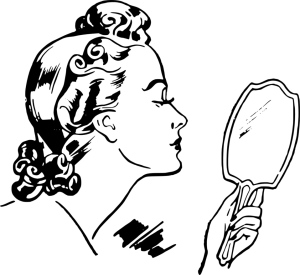 (Los Angeles) Scientists discover that people may just be self-absorbed balls of insecurity. This discovery came after an observational study of one woman over the course of a three-hour period.
(Los Angeles) Scientists discover that people may just be self-absorbed balls of insecurity. This discovery came after an observational study of one woman over the course of a three-hour period.
Scientists were initially interested in studying the behaviors of prospective students in a social setting and how “peacocking” or the need to impress, manifests in these types of interactions. However, scientists discovered that the woman provided an unexpected alternative area of research.
“We were really excited with our initial findings,” the lead scientist noted, during a recent press conference. “The data suggested that prospective students are really full of themselves.”
When asked for examples, the lead scientist noted this could be seen in the reactions to questions on the graduate degree of interest, and the manner in which degree(s) were considered and rejected.
“When a prospective student responded that they were interested in a Doctoral program, another student said, ‘Whooooooo.’”
The scientist went on: “Then, there was also a conversation between two young men about having considered, and rejecting, a medical degree. The content of the discussion appeared civil but the exchange was reminiscent of ancient wrestling between olive oil-coated men.”
During the data collection process however, the scientists notably noted the woman’s demeanor when recounting such interactions.
“She was really annoyed, and kinda mean.”
“I was super annoyed,” the woman confirmed. “I started to talk about what happened, and I couldn’t help getting riled up about it.”
“Yeah, you didn’t want to go to med school because you didn’t want to spend 20 years learning? Oh, your brother is a doctor? Oh, and yours is too?,” the woman went on, unprompted and in a sarcastic tone.
“As if the choice of not attending medical school was entirely up to that kid,” said the woman in her usual voice, rolling her eyes.
Scientists noted that shortly after, the woman shifted to statements that suggested guilt and remorse.
“We noted that after initial sarcasm,” scientists explained, “the woman’s neural and verbal processing changed. We noticed a spike in the use of tangents and qualifiers in her speech pattern, indicating that she wanted to remove herself existentially from her earlier behavior and statements.”
“I felt bad,” the woman confirmed. “They were just kids – what did they know anyway?”
After quick conference with other scientists, the study shifted to catalyst identification for the feelings of guilt and remorse observed in the woman. Scientists reviewed the woman’s prior transcripts and observational data, and discovered the key to such insights: the woman.
“I told them why I started to feel bad,” the woman recounted. “They are me.”
The scientists further explained: “[The woman] identified with these children, and the insecurities they expressed.”
“Her sarcasm was an indication of the self-loathing she was experiencing, and transference onto others,” the lead scientist went on, “not to discount the woman’s assessment of the situation.”
“They did seem really annoying.”
The study concluded that the root of the woman’s annoyance was self-identification with the source of such annoyance.
“I wanted to be thought of as smart and capable,” the woman shared. “I mean, I don’t want to be like that weirdo who said she’s been working on her application for three years. Something’s wrong with her.”
“But,” the woman course-corrected, chagrin look on her face, “I’m probably weird too. I want to do a good job, and have people like me.”
The study’s abstract notes that further study is needed to conclude, to a reasonable degree of scientific certainty, that the theory applies to a broader population.
Such future studies can include a control study with psychopaths, or rocks.



